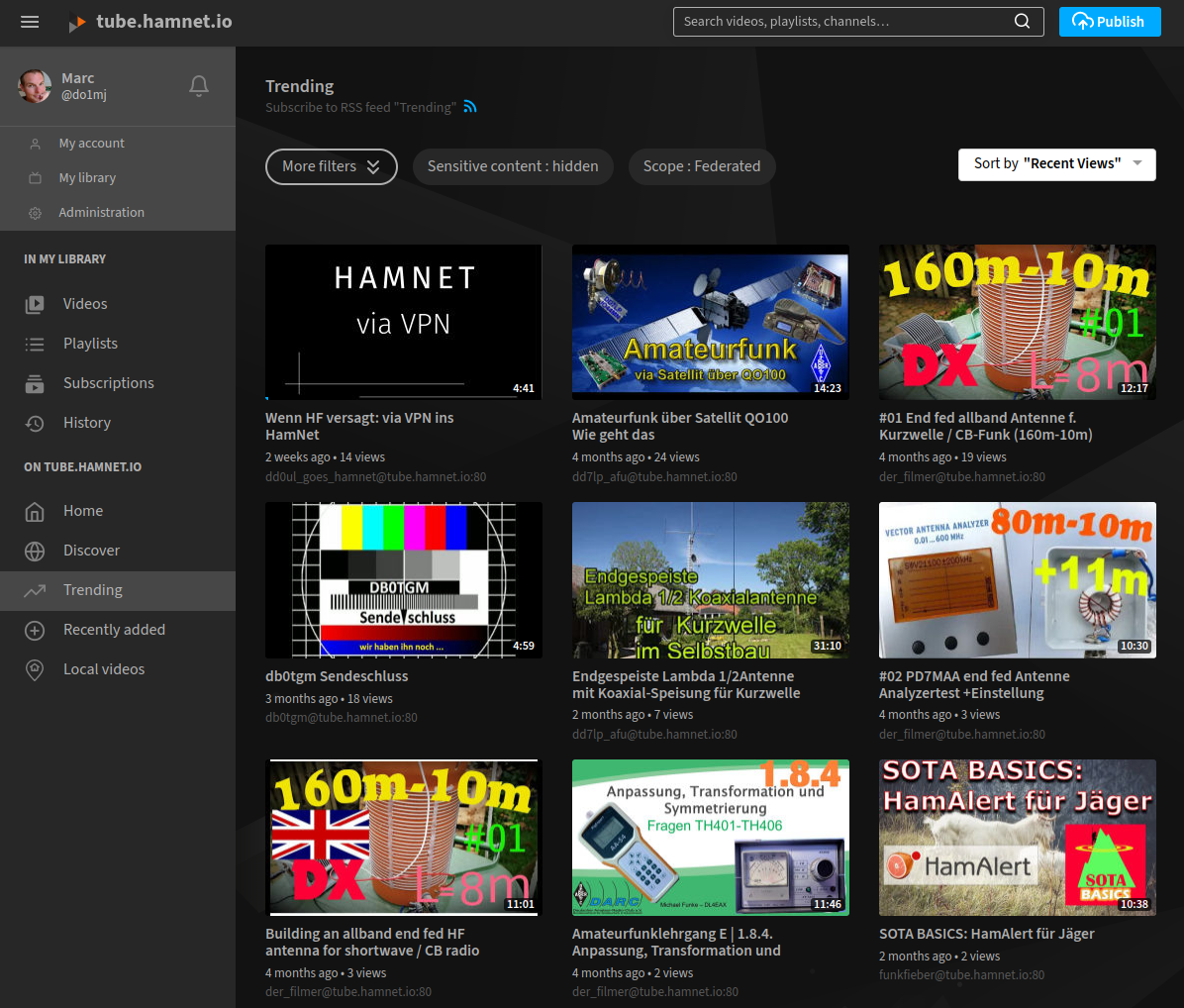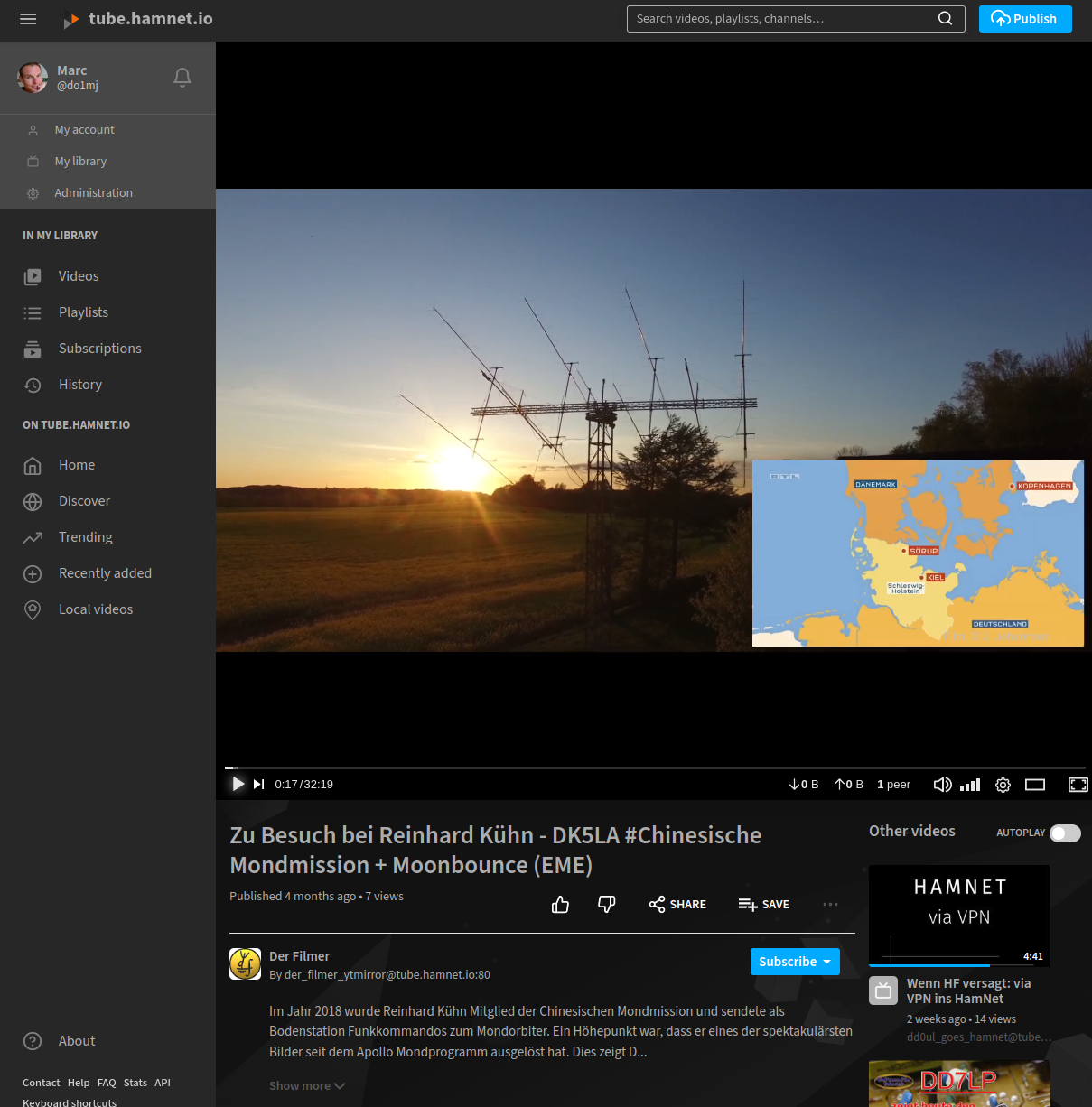The PeerTube instance tube.hamnet.io on HAMNET
When I first heard about HAMNET, a parallel Internet infrastructure based on amateur radio technologies, shortly after my ham exam, I was immediately fascinated. I have been working professionally in IT for more than 25 years and with the worldwide network since the early days of the Internet but I had never heard of HAMNET and the exclusively routed Class-A network 44.0.0/8 before. It was clear to me that I absolutely had to try this out!
However, since I have no line-of-sight to a HAMNET node in Hamburg, a connection via HF was unfortunately out of the question. But I quickly found out that I can also connect to the HAMNET via VPN. So I contacted the RTW Aachen and after a few days I got the VPN access data and on request also a static IP address. The VPN was quickly set up on a Raspberry Pi and with a static network route in the Fritzbox the HAMNET was made available in the whole home network.
The first steps in the HAMNET felt fantastic. It was like the Internet in its early days. No encryption, no viruses, no chaos, everything is openly accessible and based on trust and community. Pure Hamspirit!
According to Wikipedia, the term HAMNET stands for “Highspeed Amateur Radio Multimedia NETwork” and after a few days of research and browsing the HAMNET, I realized that the area of multimedia is clearly underrepresented. There are quite a few services to be found there: APRS-IS gateways, various homepages, chat, telephony and videoconferencing (Jitsi/BBB), search engines and even a Facebook-like platform. But I could not find a real reason to come to HAMNET again and again and to stay there for a while. So I had the idea to build up a YouTube-like video platform to provide professional high quality multimedia content on HAMNET and thus make HAMNET more attractive in terms of content and also to offer an interesting service to the younger generation of radio amateurs.

On one of my Linux servers with a 16-core AMD EPYC CPU and a 7TB ZFS RAID, I installed the OpenSoftware PeerTube and made it available to all radio amateurs via the VPN connection on HAMNET at the URL http://tube.hamnet.io/. The requirements for a server are quite high with PeerTube, because the video transcoding needs a lot of CPU cores and a lot of computing time.
PeerTube works similar to YouTube and allows creating channels, uploading video content and streaming videos in different video quality. The special feature of Peertube is that several server instances can be connected to each other and the streaming clients exchange video data on a peer-to-peer basis to relieve the server’s bandwidth. Furthermore, unlike platforms on the Internet, there is no advertising or tracking.
I wrote to all known radio amateur YouTube channels and asked if they would also make their video content available on HAMNET. Unfortunately I got a refusal from very many but a few radio amateurs kindly make their video available so that the number of videos grew quickly and meanwhile a good selection of technically relevant and high quality videos are available. Since I also provide a YouTube import interface, importing videos is very easy: just copy & paste the YouTube URL and the rest happens automatically in the background.

As with all things in amateur radio, this project thrives on the participation and commitment of radio amateurs. So everyone is invited to visit this PeerTube instance, create an account and maybe even upload some videos.
Article about HAMNET in Wikipedia
External link to the HAMNET VPN access page of RTW Aachen
Link to the PeerTube instance tube.hamnet.io (only accessible from HAMNET)